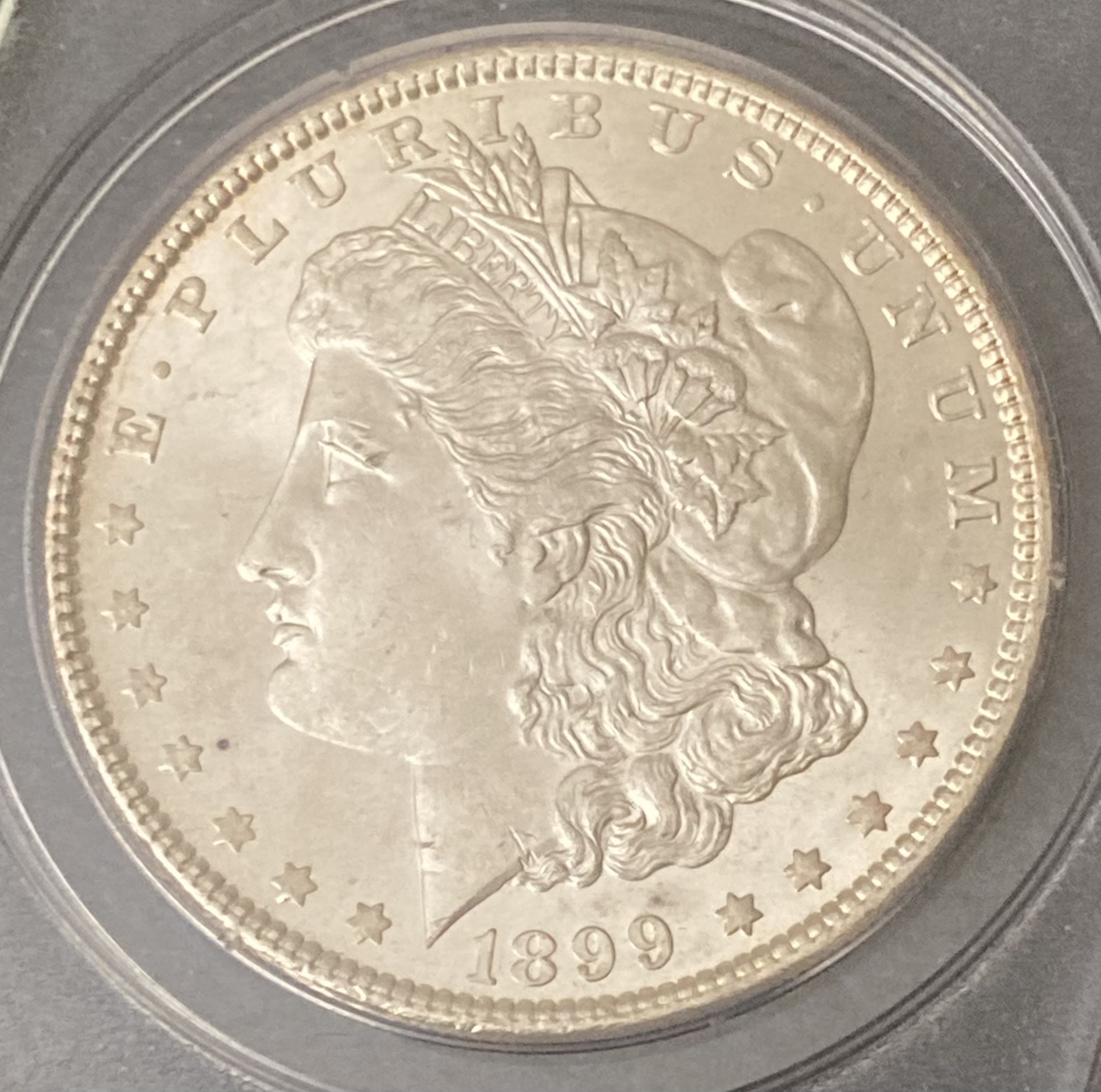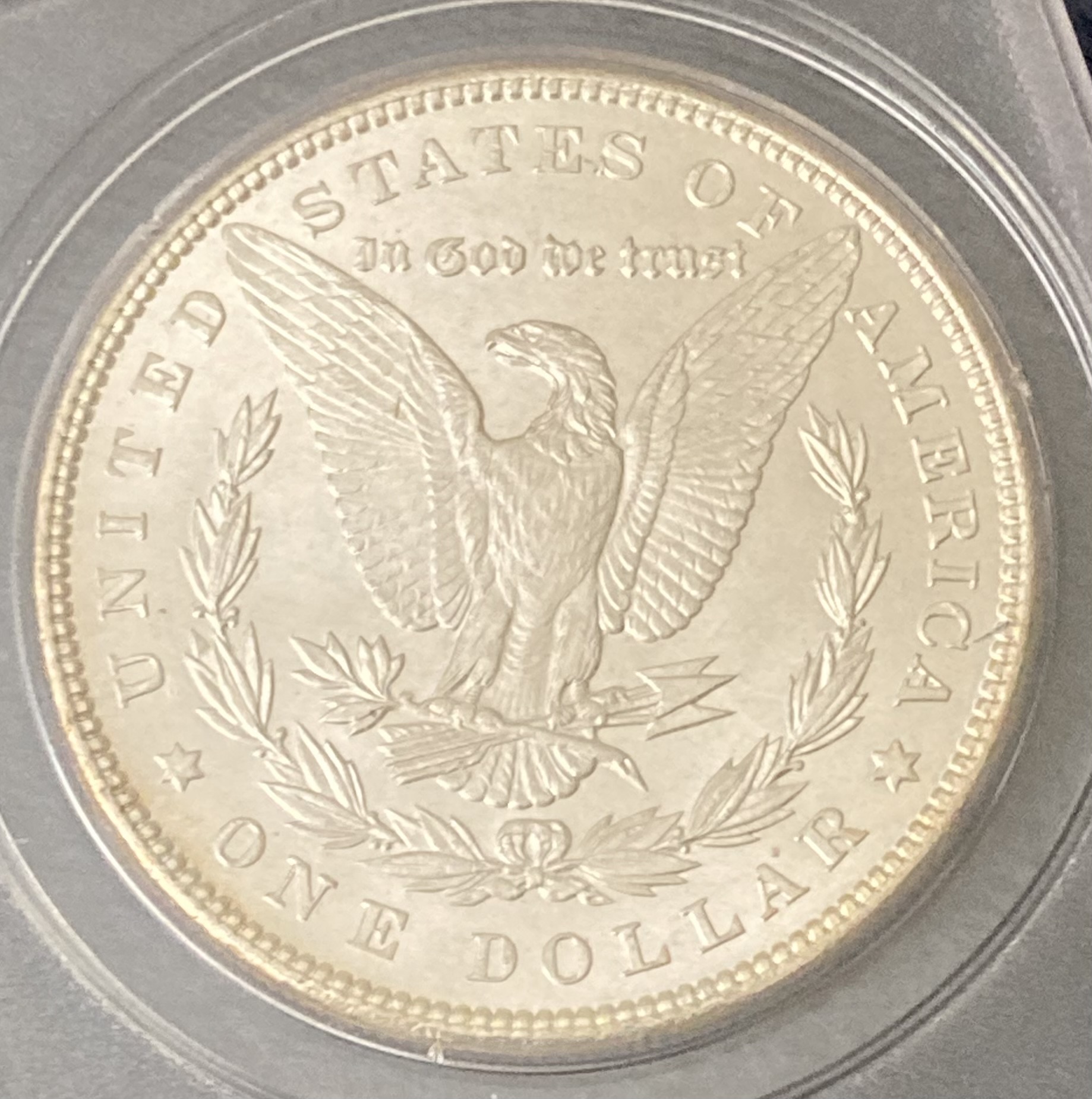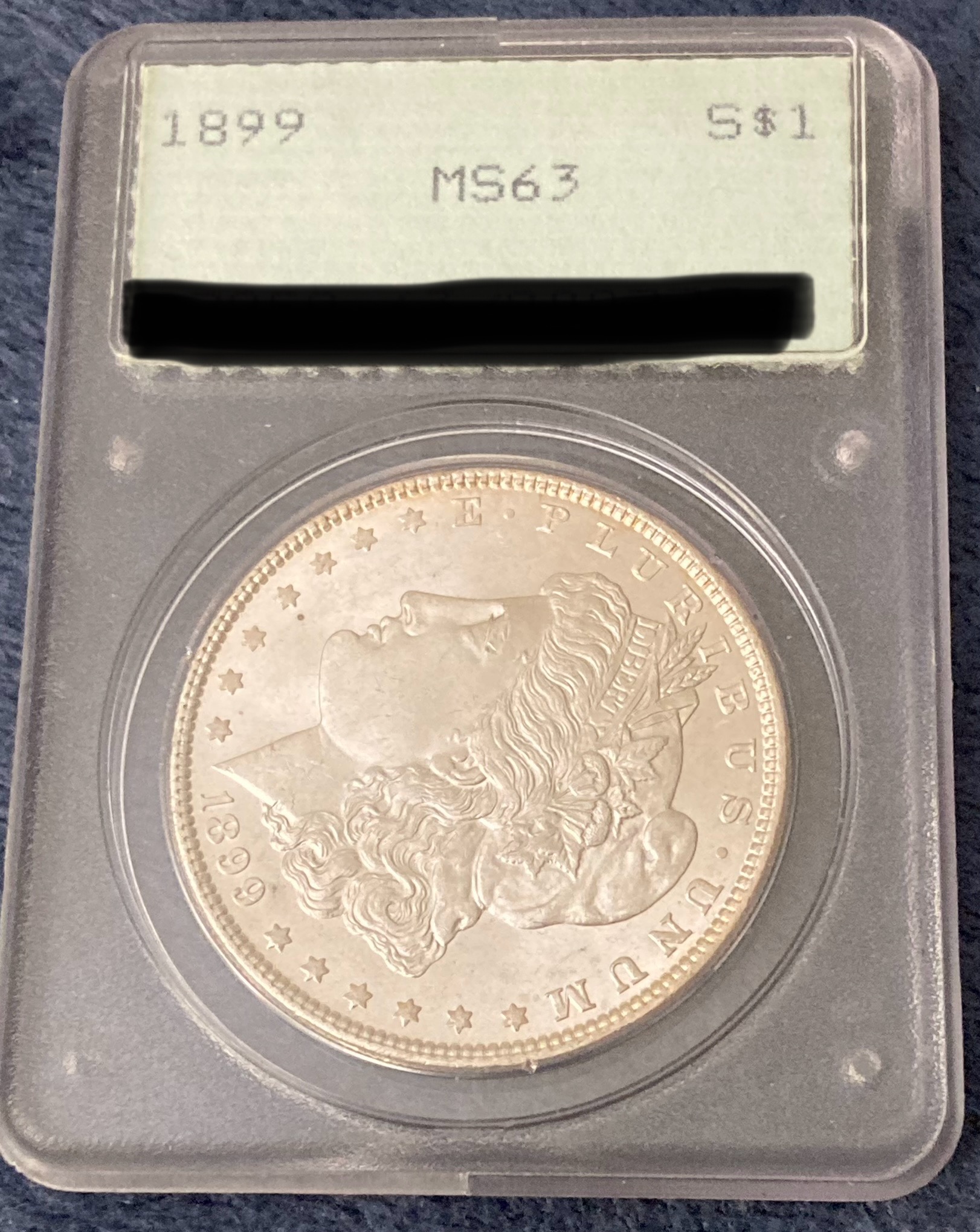Afternoon everyone …..
I’m quite sure that most of you are aware of my love for beautiful coins by now. Well one of the coin series that is my all time favorite is the Morgan silver dollar. The history of this coin is just amazing, being minted in five different United States Mints alone is amazing.
My main collector goal since starting back up, was to complete a graded set of graded MS64 Morgan silver dollars business strike Philadelphia Mint coins. I have done very well on this venture, but I’m currently missing only four coins. Three of the four are the highest priced ones in the series. The reason I say business strike is because in 1885 there was no meant for commerce strike coin produced in Philadelphia only proof strike and there were only 880 struck. What is strange though on the Philadelphia mints ledger there were 12,000 circulation coins produced.
The 1895’s circulation strike existence is known only because of its entry in the Philadelphia mint records. Many coin experts think it could be a ledger error and none of those coins were actually made. None have ever surfaced.
Today I’m going to share with you an 1899-P Morgan silver dollar. It has been graded by PCGS as an MS63. But it is in a first generation holder and will easily regrade as an MS64 when I resubmit it.
Here is a little history on the Morgan silver dollar:
The Morgan dollar is a United States dollar coin minted from 1878 to 1904, in 1921, and beginning again in 2021 as a collectible. It was the first standard silver dollar minted since the passage of the Coinage Act of 1873, which ended the free coining of silver and the production of the previous design, the Seated Liberty dollar. It contained 412.5 Troy grains of 90% pure silver (or 371.25 Troy grains = 24.057 g; 0.7734 ozt of pure silver). The coin is named after its designer, United States Mint Assistant Engraver George T. Morgan. The obverse depicts a profile portrait representing Liberty, modeled by Anna Willess Williams, while the reverse depicts an eagle with wings outstretched. The mint mark, if present, appears on the reverse above between D and O in "Dollar".
1899 Philadelphia
Mintage: 330,846
Morgan dollar
Value
1 United States dollar
Mass
26.73 g (4121⁄2 gr)
Diameter
38.1 mm (1.5 in)
Thickness
2.4 mm (0.09 in)
Edge
Reeded
Composition
90.0% Silver
10.0% Copper (1878–1904, 1921)
99.9% Silver (2021–present)
Years of minting
1878–1904, 1921, 2021–present
Mint marks
None (Philadelphia)
Obverse
Design
Liberty
Designer
George T. Morgan
Design date
1878
Reverse
Design
Eagle clasping arrows and olive branch
Designer
George T. Morgan
Design date
1878
The dollar was authorized by the Bland–Allison Act. Following the passage of the 1873 act, mining interests lobbied to restore free silver, which would require the Mint to accept all silver presented to it and return it, struck into coin. Instead, the Bland–Allison Act was passed, which required the Treasury to purchase between two and four million dollars' worth of silver at market value to be coined into dollars each month. In 1890, the Bland–Allison Act was repealed by the Sherman Silver Purchase Act, which required the Treasury to purchase 4,500,000 troy ounces (140,000 kg) of silver each month, but only required further silver dollar production for one year. This act, once again, was repealed in 1893.
In 1898, Congress approved a bill that required all remaining bullion purchased under the Sherman Silver Purchase Act to be coined into silver dollars. When those silver reserves were depleted in 1904, the Mint ceased to strike the Morgan dollar. The Pittman Act, passed in 1918, authorized the melting and recoining of millions of silver dollars. Pursuant to the act, Morgan dollars resumed mintage for one year in 1921. The design was replaced by the Peace dollar later the same year.
In the early 1960s, a large quantity of uncirculated Morgan dollars in their original bags were discovered in the Treasury vaults, including issues once thought rare. Individuals began purchasing large quantities of the pieces at face value and then removed them from circulation through hoarding, and eventually the Treasury ceased exchanging silver certificates for silver coin. Beginning in the 1970s, the Treasury conducted a sale of silver dollars minted at the Carson City Mint through the General Services Administration.
Now the coin….


